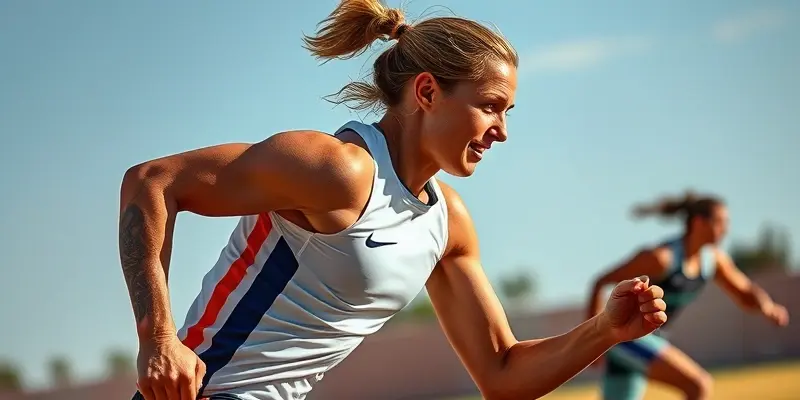Motor Learning for Recovery & Injury Prevention: Practical Tips for Every Athlete
Whether you’re just starting at the gym, training for your next game, or aiming to recover better after an injury, effective recovery and injury prevention are essential. They’re not just for the pros—anyone who moves can benefit from these science-backed, practical methods. Let’s dive into how you can train smarter, recover faster, and bounce back stronger.
The Science of Motor Learning: Why It Matters
Have you ever wondered why some athletes seem to “just know” how to move efficiently, even under stress? This is where motor learning enters the scene. It’s the process of teaching your body and brain to work together, so movements become quick, safe, and automatic. The better you train your nervous system, the less likely you are to get hurt—and the faster you recover if you do.
Evidence-Based Strategies for Injury Prevention
Warm-Up and Prevention Programs that Work
A proper warm-up is more than just tradition—it’s proven science. Programs like FIFA 11+ have shown to cut injury risk by up to 50%. The secret? They combine strength, balance, coordination, and agility in just 15–22 minutes.
- Practical tip: Follow structured routines and stick with them. Consistent practice makes you more resilient.
Implicit vs. Explicit Motor Learning
Do you overthink your movements or let them flow naturally? Research shows that implicit learning (focusing on outcomes, not the tiny details) creates more adaptable, robust athletes.
- Use external cues: Instead of “keep your knees over your toes,” try, “push the ground away.”
- Self-video feedback: Watching yourself and problem-solving is more effective than copying others. It helps you spot and fix personal movement patterns.
Neuromuscular and Cognitive Drills
Training is about more than muscles—it’s about your brain. Combine exercises that require sudden decisions (like reactive agility drills) with those that challenge balance and control. Think of it as a fitness “flight simulator.”
- Example: Partner mirror drills or balance boards with surprise directions.
Train for Real Life—Not Just Reps
“Repetition without repetition” is the goal. Practice movements in different contexts—change the speed, surface, or decision-making involved. This prepares you for unpredictability, just like in real sports or daily life.
Supporting Your Recovery: Tools, Nutrition, and Mindset
Leverage Simple Tech and Tools
Recording your movements (with a phone or wearable) provides instant, personal feedback. Tools like foam rollers and massage guns can help reduce soreness and support recovery, especially when paired with active movement.
Nutrition Makes a Difference
Your body heals with what you fuel it:
- Protein: Helps muscles repair.
- Micronutrients (Vitamin C, Vitamin D, zinc, magnesium, omega-3s): Support healing. For more on the importance of vitamin C, see vitamin C immunity athletes.
- Hydration: Keeps tissues supple and aids recovery.
Keep Your Mind in the Game
Set clear, achievable goals. Visualize success—imagine your return to full strength. Stay connected with teammates or coaches; support and accountability keep motivation high, even during setbacks.
Returning to Training Safely: Your Step-By-Step Plan
- Gradual progression: Increase intensity and complexity slowly.
- Prioritize movement quality: Don’t rush to lift heavier or go faster until your form is solid.
- Review skills often: Integrate motor learning exercises from rehab into your normal workouts.
Quick Reference: Common Sports Injuries & Prevention Focus
| Injury Type | Key Prevention Focus | Recovery Highlights ||———————|——————————————————|———————————————–|| ACL/Knee | Neuromuscular, plyometrics, balance, feedback | Landing/cutting skills, video analysis || Ankle Sprain | Proprioception, balance drills | Controlled loading, variable surfaces || Muscle Strain | Strength, flexibility, slow eccentric movements | Gentle mobilization, gradual overload || Overuse | Technique, load management, cross-training | Rest, correcting imbalances |
Take Action—Your Health, Your Future
Recovery and injury prevention aren’t reserved for elite athletes—they’re for you. Apply one new strategy this week: try a structured warm-up, record your exercises, or tweak your cues during training. You might be surprised how much better (and safer) your movement feels.
How will you support your recovery journey? Share your stories and questions with our community—we’re all in this together!
As GymPulse’s lead trainer, I’m passionate about helping you move stronger, smarter, and safer. See you at your next workout!

